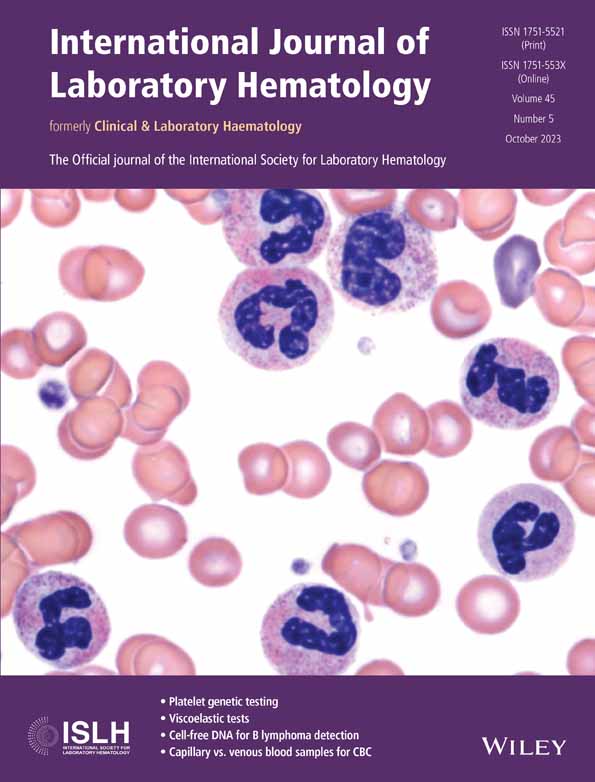Evaluation of two fully automated ADAMTS13 activity assays in comparison to manual FRET assay
Abstract
Introduction
The objective of the present study was to evaluate and compare the validity and utility of two fully automated ADAMTS13 (a disintegrin and metalloproteinase with a thrombospondin type 1 motif, member 13) activity assays for clinical diagnostic decision-making and to compare their performance.
Methods
Two automated ADAMTS13 activity assays (Werfen HemosIL® AcuStar ADAMTS13 Activity, Technoclone Technofluor ADAMTS13 Activity) were compared with a manual FRET assay (BioMedica ACTIFLUOR ADAMTS13 Activity). The following samples were used: 13 acute phase TTP (thrombotic thrombocytopenic purpura) samples from 11 different patients, one sample from a patient with congenital ADAMTS13 deficiency, 16 samples from control patients, three follow-up samples from TTP patients in long-term remission and one sample from a patient with stem cell transplantation related thrombotic microangiopathy (TMA). The WHO 1st International Standard for ADAMTS13 and several dilutions of normal plasma with ADAMTS13-depleted normal plasma were also tested. Statistical analysis included descriptive statistics, sensitivity and specificity, Passing & Bablok regression and Bland–Altman plot.
Results
The quantitative comparison between the HemosIL® (x) and Technofluor (y) methods showed a strong correlation (Pearson r = 0.98, n = 49). When considering an ADAMTS13 activity of <10% as a hallmark for the diagnosis of TTP, two fully automated assays were both able to identify all TTP- and non-TTP-samples correctly, resulting in sensitivities and specificities of 100%.
Conclusion
Both fully automated ADAMTS13 activity assays showed a good diagnostic performance and quantitative correlation among themselves, discriminating reliably between TTP- and non-TTP-patients.
CONFLICT OF INTEREST STATEMENT
The authors declare no conflict of interest.
Open Research
DATA AVAILABILITY STATEMENT
The data that support the findings of this study are available from the corresponding author upon reasonable request.




